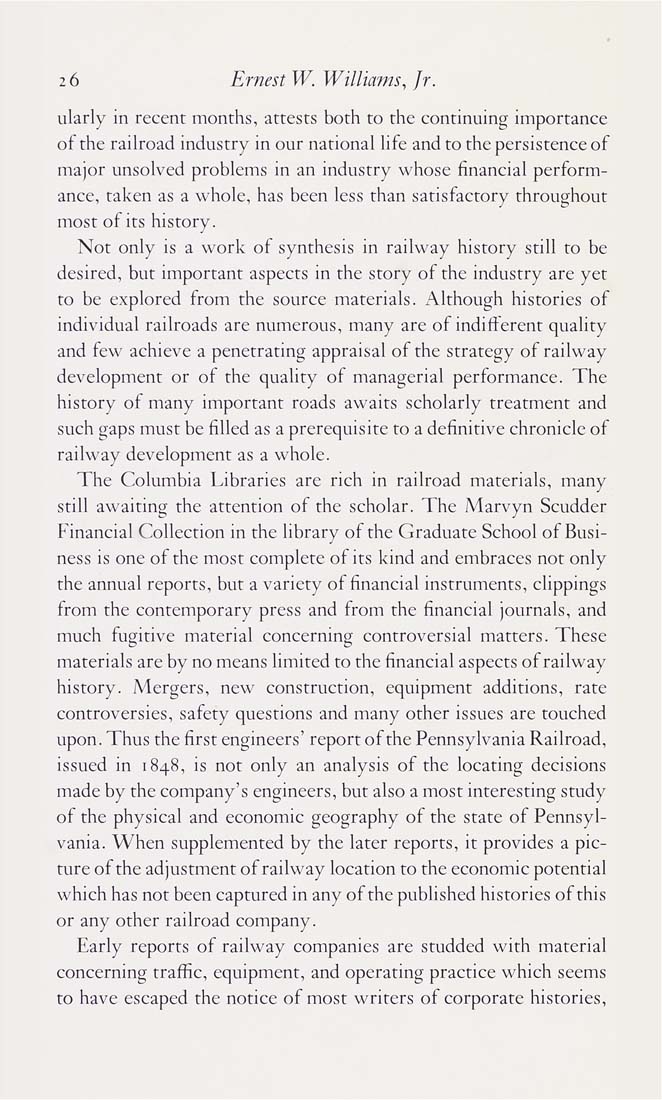Columbia Library columns (v.7(1957Nov-1958May))
(New York : Friends of the Columbia Libraries. )
|
||
|
|
|
|
| v.7,no.2(1958:Feb): Page 26 |

2 6 Ernest W. Willia?ns, fr. ularly in recent months, attests both to the continuing importance of the railroad industry in our national life and to the persistence of major unsolved problems in an industry whose financial perform¬ ance, taken as a whole, has been less than satisfactory throughout most of its history. Not only is a work of synthesis in tailway history still to be desired, but important aspects in the story of the industry are yet to be explored from the source materials. Although histories of individual railroads are numerous, many are of indifferent quality and few achieve a penetrating appraisal of the strategy of railway development or of the quality of managerial performance. The history of many important roads awaits scholarly treatment and such gaps mtist be filled as a prerequisite to a definitive chronicle of railway development as a whole. The Columbia Libraries are rich in railroad materials, many still awaiting the attention of the scholar. The Marvyn Scudder Financial Collection in the library of the Graduate School of Busi¬ ness is one of the most complete of its kind and embraces not only the annual reports, but a variety of financial instruments, clippings from the contemporary press and from the financial journals, and much fugitive material concerning controversial matters. These materials are by no means limited to the financial aspects of railway history. Mergers, new construction, equipment additions, rate controversies, safety questions and many other issues are touched upon. Thus the first engineers' report of the Pennsylvania Railroad, issued in 1848, is not only an analysis of the locating decisions made by the company's engineers, but also a most interesting study of the physical and economic geography of the state of Pennsyl¬ vania. When supplemented by the later reports, it provides a pic¬ ture of the adjustment of railway location to the economic potential which has not been captured in any of the published histories of this or any other railroad company. Early reports of railway companies are studded with material concerning traffic, equipment, and operating practice which seems to have escaped the notice of most writers of corporate histories. |
| v.7,no.2(1958:Feb): Page 26 |







